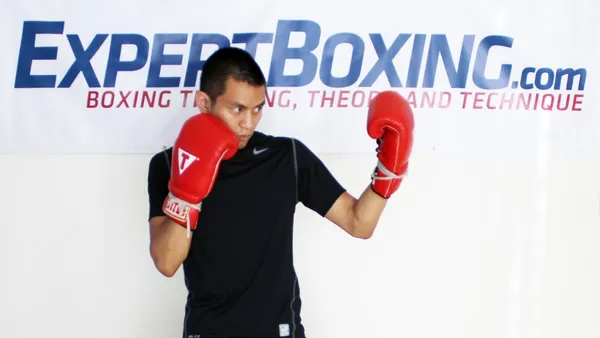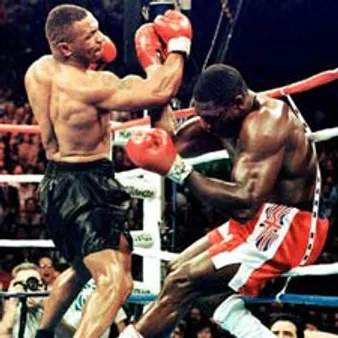Table of Contents
Welcome to Kizworld, your ultimate destination for mastering the art of boxing. In this comprehensive guide, we're delving into the intricacies of the uppercut, a powerful and game-changing technique that can elevate your boxing skills to new heights. Discover the mechanics behind this devastating strike, learn how to execute it with precision and power, and uncover the secrets to avoiding common pitfalls that hinder your progress. Unleash the full potential of your boxing arsenal with kizworld's guidance on How to do an uppercut.
How to Do an Uppercut: Master the Devastating Punch
I. How to Throw an Uppercut: A Step-by-Step Guide
How to Throw an Uppercut: A Step-by-Step Guide
Stance and Positioning
- Stand with your feet shoulder-width apart, knees slightly bent.
- Keep your weight evenly distributed on both feet.
- Your lead foot should be slightly forward, with your toes pointed outward.
- Your rear foot should be slightly back, with your toes pointed forward.
The Punch
- Start by cocking your fist, with your thumb tucked inside your fingers.
- Bring your fist up to your chin, with your elbow tucked in close to your body.
- Drive your fist upward, keeping your elbow tucked in.
- Aim for your opponent's chin or solar plexus.
Follow Through
- After you've landed your punch, quickly bring your fist back to your chin.
- Keep your elbow tucked in close to your body.
- Be ready to throw another punch or defend yourself.
Tips for Throwing an Effective Uppercut
- Keep your elbow tucked in close to your body throughout the punch.
- Aim for your opponent's chin or solar plexus.
- Follow through with your punch, bringing your fist back to your chin.
- Be ready to throw another punch or defend yourself.
Common Mistakes to Avoid
- Don't drop your lead hand when you throw an uppercut.
- Don't swing your arm wide when you throw an uppercut.
- Don't telegraph your punch by cocking your fist too early.
- Don't leave yourself open to a counterattack after you throw an uppercut.
II. Mastering the Uppercut: Techniques and Tips
Mastering the Uppercut: Techniques and Tips
Developing a powerful uppercut is not only about strength; it requires a combination of proper technique, precision, and timing. Here are some techniques and tips to master this formidable punch:
Understanding the Mechanics
An uppercut is a short, upward punch typically thrown from a close range. The power of the uppercut comes from the rotation of the hips, shoulders, and arms, which generates a whip-like motion that drives the fist upward.
- Start with a stable stance, feet shoulder-width apart and knees slightly bent.
- Keep your hands up to protect your face and maintain balance.
- As you throw the uppercut, rotate your hips and shoulders while driving your fist upward from the waist.
- Keep your elbow tucked in to maximize the power and accuracy of the punch.
- Extend your arm fully upon impact and immediately retract it to protect yourself.
Pro Tip: Practice your uppercut in front of a mirror to ensure proper form and technique.
Mastering Timing and Distance
The uppercut is most effective when thrown at the right time and distance. Here's how to improve your timing and positioning:
- Pay attention to your opponent's movements and anticipate their attacks.
- Use footwork and head movement to create openings for the uppercut.
- Practice throwing the uppercut from different angles and positions.
- Experiment with the timing of your uppercut to catch your opponent off guard.
Pro Tip: Sparring is an excellent way to develop your timing and distance control for the uppercut.
Building Power and Strength
Building power and strength in your uppercut requires a combination of targeted exercises and well-rounded conditioning.
- Incorporate uppercut-specific drills into your boxing training regimen.
- Perform exercises that strengthen the muscles in your shoulders, arms, and core.
- Engage in explosive exercises like plyometrics to enhance your power.
- Maintain a healthy diet and ensure adequate rest to support muscle growth and recovery.
Pro Tip: Use a heavy bag or a partner to practice your uppercut and gradually increase the intensity of your workouts.
Common Mistakes to Avoid
Avoid these common mistakes to ensure you're throwing effective and safe uppercuts:
Mistake: Throwing with arm only | Correction: Engage your whole body, especially hips and shoulders |
|---|---|
Mistake: Not protecting your face | Correction: Keep your hands up and elbows tucked in |
Mistake: Leaning forward | Correction: Maintain an upright stance and balanced weight distribution |
Mistake: Throwing wide uppercuts | Correction: Keep your elbows tucked and the punch in a tight line |
Mistake: Telegraphing your punch | Correction: Conceal your intentions and release the uppercut suddenly |
Pro Tip: Have an experienced boxing coach or training partner provide feedback on your technique to identify and correct any errors.
III. Common Mistakes to Avoid When Throwing an Uppercut
Common Mistakes to Avoid When Throwing an Uppercut
Mistake 1: Not Engaging Your Core
Many beginners make the mistake of relying solely on their arms when throwing an uppercut. This can lead to a weak and ineffective punch. To generate real power, you need to engage your core and use your legs to drive the punch. By tightening your core and pushing off with your back leg, you can create a solid base from which to launch the uppercut.
- Focus on engaging your core and using your legs to generate power.
- Dont rely solely on your arms.
Mistake 2: Loading Up the Punch
Another common mistake is loading up the punch too much. This means taking too long to wind up the punch, which gives your opponent time to see it coming and react. Instead, you should keep your punch compact and throw it quickly. By keeping your punch tight, you can make it more difficult for your opponent to defend and increase your chances of landing a clean hit.
- Keep your punch compact and throw it quickly.
- Dont load up the punch too much.
Mistake 3: Throwing the Uppercut from Too Far Away
The uppercut is a short-range punch, and it's important to throw it from close range. If you try to throw the uppercut from too far away, it will be weak and ineffective. Instead, you should step in close to your opponent and then throw the uppercut. This will give you the best chance of landing a clean hit.
- Throw the uppercut from close range.
- Dont throw the uppercut from too far away.
Mistake 4: Not Following Through
Once you've landed the uppercut, it's important to follow through with the punch. This means continuing to drive your fist through your opponent's face after it makes contact. By following through, you can increase the power of the punch and make it more difficult for your opponent to recover.
- Follow through with the punch.
- Dont stop your punch after it makes contact.
IV. Uppercut Variations and Their Applications
Uppercut Variations and Their Applications
The uppercut is a powerful and versatile punch that can be used in various situations during a boxing match. It is a straight, upward punch thrown with the lead hand, primarily targeting the opponent's chin or solar plexus. While the basic uppercut remains effective, there are several variations that allow boxers to attack from different angles and create unique combinations.
Variation | Target | Application |
|---|---|---|
Jaw or temple | Thrown with more lateral movement, landing at a downward angle | |
Chin or solar plexus | Two consecutive uppercuts thrown in quick succession | |
Solar plexus or ribs | Targets the opponent's body, disrupting their breathing and stamina | |
Jaw or cheekbone | A combination of a check hook and an uppercut, thrown in a circular motion |
Applications of Uppercut Variations
- The overhand uppercut is particularly effective against taller opponents or when the boxer is at a close range.
- The double uppercut is a powerful combination that can catch the opponent off guard and cause significant damage.
- The body uppercut is useful for weakening the opponent's core and reducing their stamina, making it harder for them to continue fighting.
- The check hook uppercut is a deceptive move that combines the power of the uppercut with the accuracy of the hook.
Each uppercut variation has its own advantages and is suitable for different scenarios during a boxing match. By mastering these variations, boxers can diversify their attacks and increase their chances of landing effective punches.
V. Conclusion: Unleashing the Uppercut's Devastating Potential
As you embark on your journey to master the uppercut, remember that practice and dedication are your most valuable allies. With unwavering commitment, you will transform this technique into a weapon of precision and power, capable of striking fear into the hearts of your opponents. Embrace the challenge, refine your skills, and unleash the devastating potential of the uppercut. In the ring, it is not just about the physical prowess; it is about the unwavering spirit, the relentless pursuit of excellence, and the unwavering belief in your abilities. As you step into the arena, let the uppercut be your testament to the countless hours of training and unwavering determination. Seize the moment, unleash the fury, and leave an indelible mark on the world of boxing.